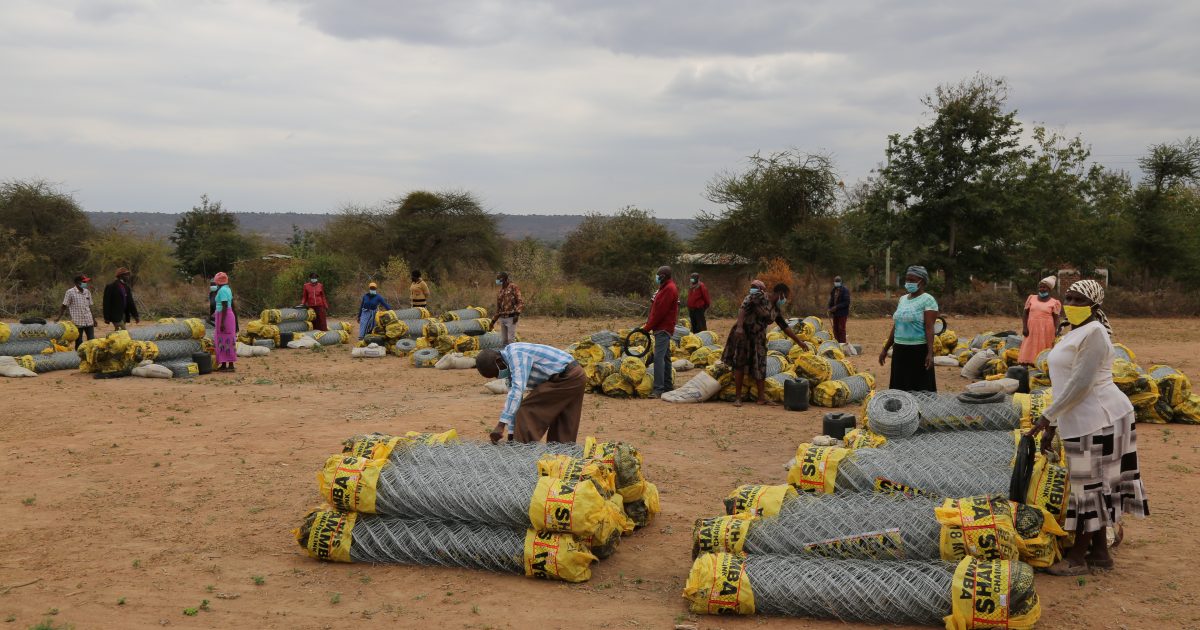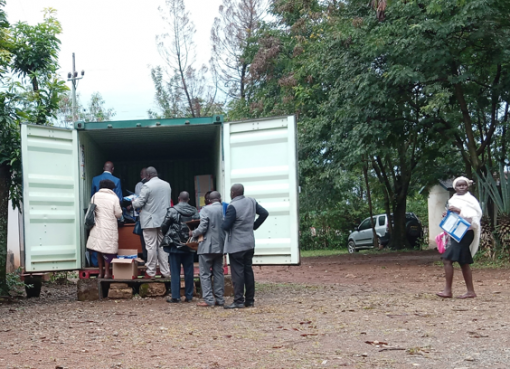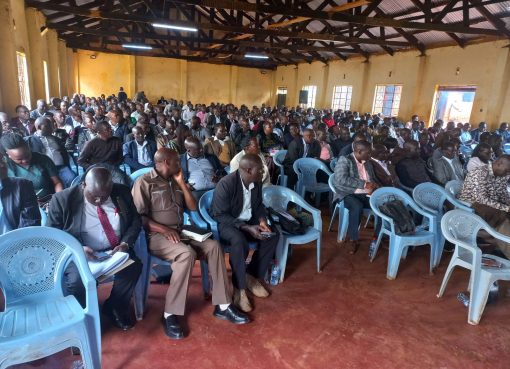Kitui Ecosystem Conservator Joyce Nthuku is calling on farmers to apply for Sh 10 million forest investment facility to accelerate the county’s efforts to increase the forest cover from 7.2 per cent to 10 per cent by 2022.
Nthuku lamented that the world faces triple self-reinforcing interconnected crises of climate change, biodiversity loss pollution and waste management that will be solved once the national forest cover threshold of 10 per cent is achieved.

“Land degradation is the fourth crisis which cuts across borders while affecting the youth, women and the most marginalized communities. The forest investment facility offers a solution to mitigate land degradation,” said the Ecosystem Conservator.
Nthuku said that Kenya Forest Service (KFS) in collaboration with Africa Wood Grow (AWG) is tapping community-based groups to ensure harmonized efforts from grassroots to address land restoration as part of Covid-19 recovery processes.
Speaking at Umu Farm in Kitui Rural, she said that destruction of vegetation cover in drylands occurs for a variety of reasons such as overgrazing, over cultivation, fuel wood collection and burning. “Stock grazing is the most widespread use of drylands and it is widely regarded as a major cause of desertification owing to its increased intensity,” said Nthuku.
The Ecosystem Conservator noted that KFS major role in the drylands is sustainable management and utilization of drylands forest resources for community livelihood improvement and climate change mitigation.
She pointed out that the Service is increasing and maintaining the area under tree cover in ASALS through institutional tree planting approaches and rehabilitations of degraded areas for enhanced environmental conservation and livelihood improvement.
“The Service is also promoting sustainable investments in dryland forest enterprises such as bee keeping, silk and aloe farming, value addition for products such as gums and resins,” she noted.
She said that KFS has started programmes to ensure that the sustainable forestry management practices are achieved in the drylands.
“These include the promotion and establishment of suitable multipurpose tree species in the ASALS as well as water harvesting and conservation measures in the drylands,” said Nthuku.
Africa Wood Grow Project Manager Jeconiah Mokaya said that the tree growing project adopts an integrated approach to addressing deforestation, land degradation and biodiversity loss among communities in the arid Kitui County.
“Our organization is supporting community-led Forest and Landscape Restoration (FLR) and the development of alternative livelihoods to attain the national forest cover of 10 per cent and more through the provision of indigenous tree seedlings and fencing materials to farmers,” said Mokaya.
He said that deforestation is largely driven by unsustainable forest use by communities, including logging for construction materials and fuel wood, overgrazing, land use change and grass fires, and is aggravated by population growth and the lack of alternative livelihoods.
“AWG works with environmental volunteers who have adopted trees on farms and to increase forest cover in the region. These volunteers possess the trees and are maintained for them,” he said.
The Project Manager said that AWG is in a process of establishing a volunteer tourism where those who adopted the trees will visit the farms and the surrounding communities to train them on environmental conservation and natural resource management.
“We invite the communities around us to embrace the idea so that in collaboration with schools, universities other stakeholders and partners can provide trainings to farmers on conservation, alternative production technologies and biodiversity enrichment and conservation,” said Mokaya.
Stella Isaac, a beneficiary of the project, said that the farmers have planted over 15, 000 species of the highly drought resistant Melia Volkenssi, locally known as Mukau and other species that translates to 345 hectares of restored farmlands.
Pius Mathuku disclosed that since 2017 when the project kicked off in the area, weather conditions have improved tremendously adding that the trees have been able to attract relief rainfall for the last four seasons.
By Yobesh Onwong’a





